Mazda doesn’t believe in change for change’s sake so you’ll be hard pressed to find aesthetic changes to the 2017 model, though plenty has gone on under its familiar skin.
One of the key changes is the addition of forward and reverse Smart City Braking across the entire range – the first small SUV in its class to feature autonomous braking as standard.
Forward braking works up to 80km/h to prevent or mitigate a collision, while in reverse it will stop you hitting something or someone up to 10km/h.
Other safety featured include Blind Spot Monitoring (BSM) and Rear Cross Safety Alert as standard on the Maxx grade up, while sTouring and Akari variants also get Driver Attention Alert (DAA) and Traffic Sign Recognition (TSR) which alerts you if you’re braking speed limit via the head-up display and audible alarm (which you can turn off).
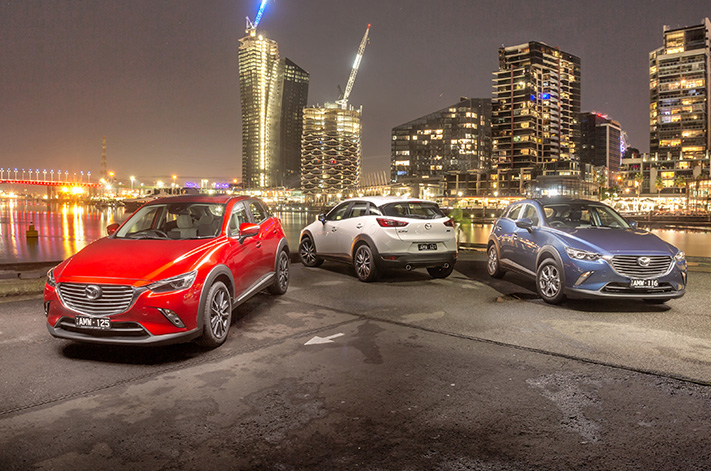
The range-topping Akari also gets Adaptive LED Headlamps and Front Parking Sensors, however active cruise control is still unavailable.
As with other entry-level Mazda variants, the Neo still doesn’t come with a reversing camera to keep the base cost down, though it is a $500 option.
There was always a lot to like about the Mazda CX-3 but there were a couple of notable shortcomings including ride refinement on rougher roads and excessive road noise.
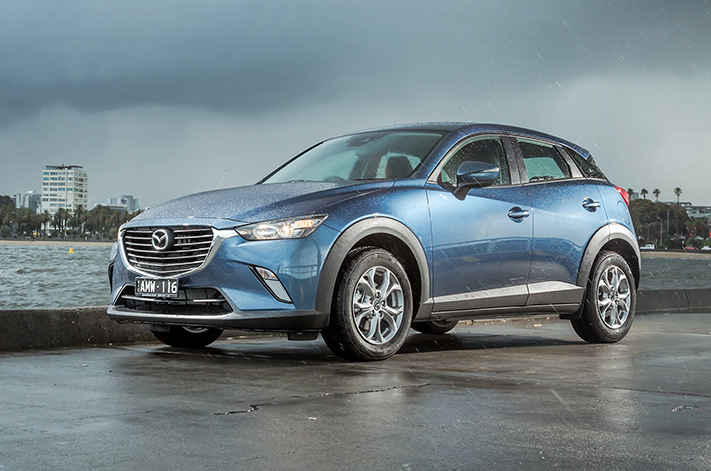
The former has been addressed with the addition of Mazda’s SkyActiv G-Vectoring Control (GVC), which uses the engine to enhance chassis performance by varying the torque loading on the front wheels for smoother cornering. The front suspension arm has also been redesigned and the angle of the front damper bushes changed, resulting in a more refined ride on rougher surfaces and less body roll.
Diesel variants are also more refined in terms of throttle response and noise. A ‘High-Precision DE Control Boost’ has been introduced for quicker accelerator response, and it sounds less truck-like thanks to the some fancy gear including the Natural Sound Smoother which cushions the cylinders to reduce ‘diesel knock’ and Natural Frequency Control which suppresses sound waves much like noise cancelling headphones.
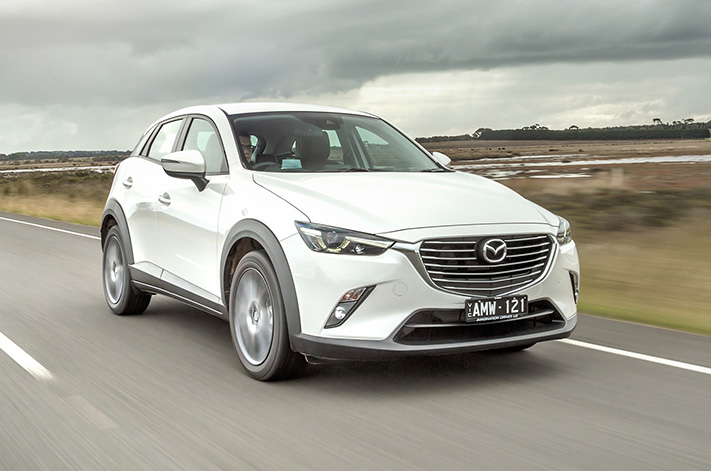
Noise Vibration and Harshness (NVH) has been reduced to more acceptable levels in all models with the addition of thicker carpets, and extra sound insulation in the dash panel and floor tunnel. Thicker trim seals have also been added to the C-pillar and tailgate opening, resulting in a reasonable reduction in general road and wind noise.
Inside, the Mazda CX-3 receives a newly designed steering wheel taken from the CX-9 and illuminated meter graphics that are an improvement over the old LCD display.
Outside, a new paint colour, Eternal Blue Mica, has been introduced while the 18-inch alloy wheels in sTouring and Akari models are finished in gun metal.
The high-grade models also feature auto folding and heated mirrors, while Neo and Maxx side mirrors now fold with a flick of a switch.
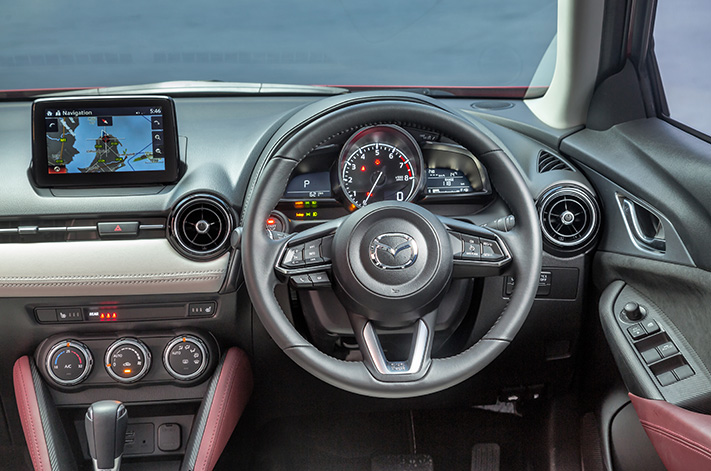
The range-topping Akari also gains more luxury with heated 10-way power adjustable driver seats with memory function, auto folding mirrors, digital radio, a coloured Active Driving Display and the full range of available i-ACTIVSENSE safety equipment.
As before, the CX-3 is powered by a 2.0 litre SKYACTIV-G petrol and a 1.5 litre SKYACTIV-D diesel engine mated to a 6-speed SKYACTIV-MT manual or 6-speed SKYACTIV-Drive automatic transmission.
The New Mazda CX-3 is on sale now, with prices starting at $20,490.
2017 Mazda CX-3 Pricing
- Neo: 2.0L petrol FWD manual- $20,490
- Neo: 2.0L petrol FWD auto – $22,490
- Maxx: 2.0L petrol FWD manual – $22,890
- Maxx: 2.0L petrol FWD auto – $24,890
- Maxx: 2.0L petrol AWD auto – $26,890
- Maxx: 1.5L turbo diesel FWD – $27,290
- sTouring: 1.5L turbo diesel AWD auto – $33,390
- sTouring: 2.0L petrol AWD – $30,990
- sTouring: 2.0L petrol FWD auto – $28,990
- sTouring: 2.0L petrol FWD – $26,990
- Akari: 2.0L petrol FWD manual – $31,490
- Akari: 2.0L petrol FWD auto – $33,490
- Akari 2.0L petrol AWD auto – $35,490
- Akari 1.5L turbo diesel AWD – $37,890
QUESTION – MARTIN: My wife has a Mazda 2, and we are looking to buy another new car. At the dealer we looked at the current Mazda 2 Genki small hatch as well as the Mazda CX-3 Maxx small SUV.
Is there another car we should look at? We drive mainly in the city and a little country from time to time. Mileage would be approximately 10,000km per year.
The Mazdas appeal to us because they have lots of features and we like our Mazda 2.
BUDGET: $30,000
RESPONSE – SAMANTHA: The Mazda 2 is a fabulous city car, and within your budget you can load up on the features and spec. The Genki model you looked at ($20,690) is the top of the range and does come with a lot of standard equipment. It’s an excellent option.
The CX-3 Maxx ($22,390) is also an excellent vehicle, with a higher driving position and slightly easier access up front than the diminutive Mazda 2, however it is, in fact, based on the Mazda 2 so the extra money doesn’t get you much more in the way of cabin room or cargo space, and the mid-spec Maxx model grade doesn’t have as much equipment as the top-spec Mazda 2 Genki.
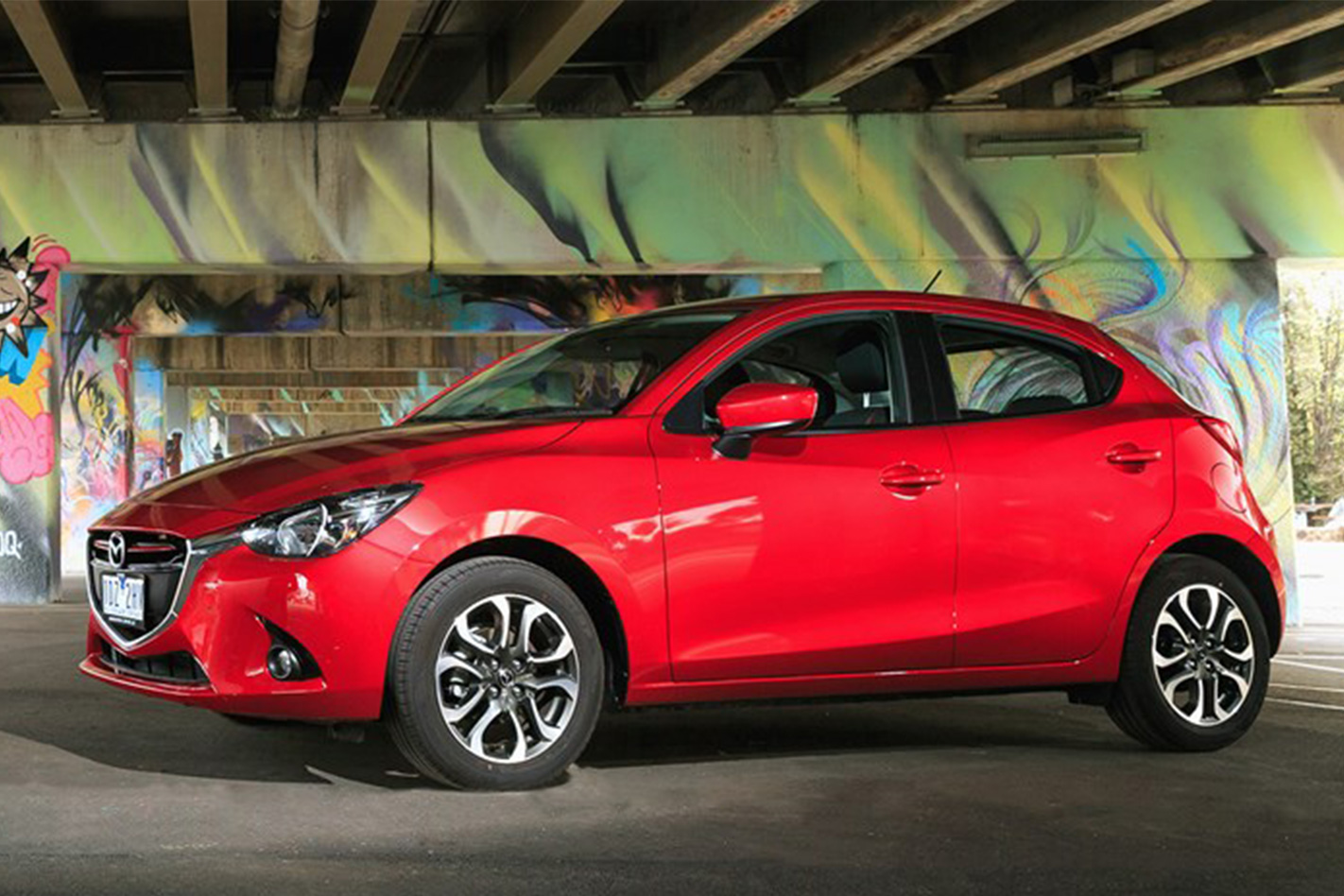
It’s also worth noting that as the CX-3 has a larger engine than the Mazda 2 (2.0-litre vs 1.5-litre) it will have some more costs associated with it; not just the buying price, but also slightly higher running costs such as fuel consumption, as well as tyres etc., so be sure an SUV is necessary for your needs.
If you are looking at a slightly larger car than the Mazda 2 light hatch, you may want to consider the Mazda 3 instead of the CX-3. The Mazda 3 Maxx Safety is the pick ($25,890). Other small hatchbacks worth looking at outside the Mazda brand include the Ford Focus (Trend, or a demo Titanium), and the Hyundai i30 Active X ($22,590).
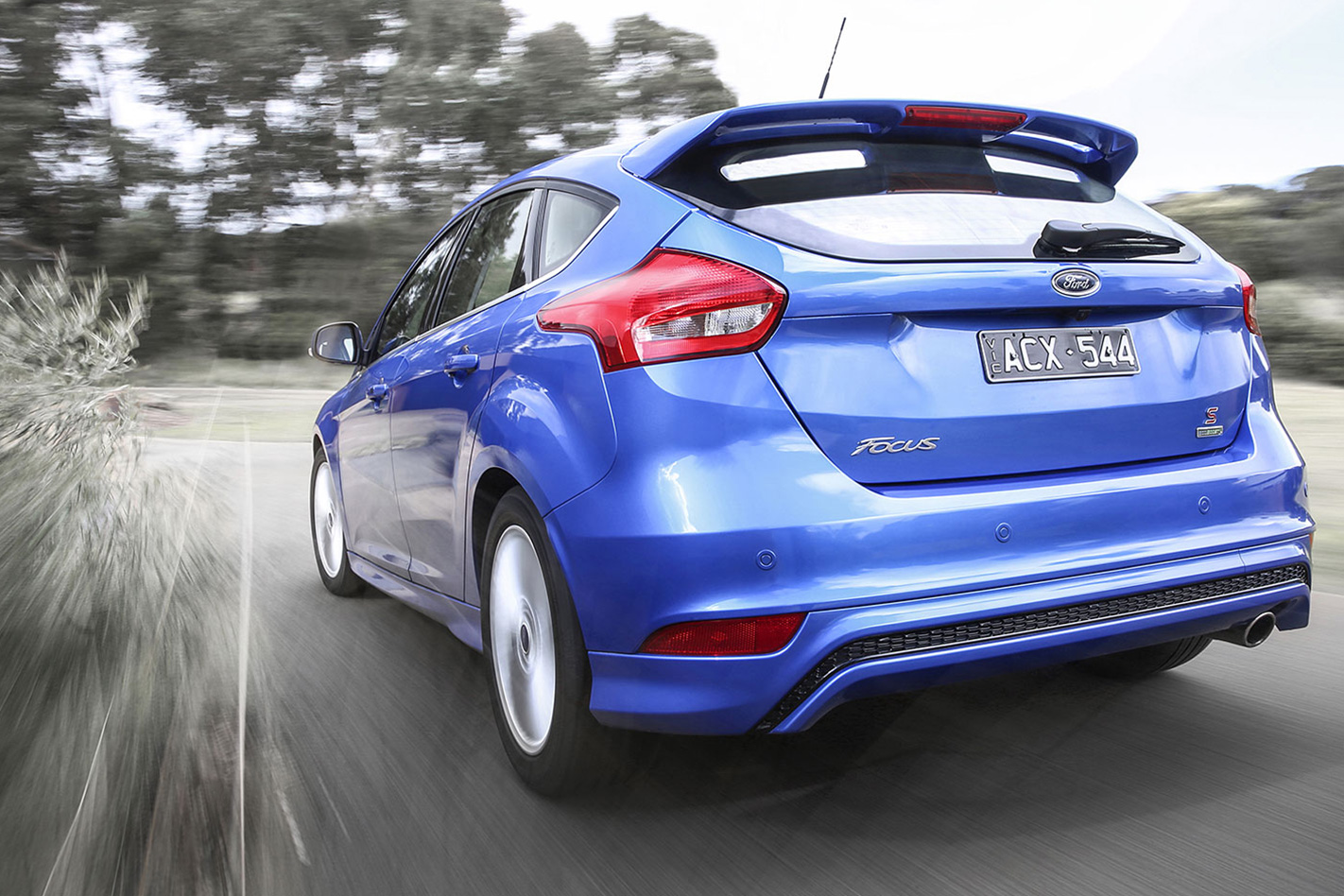
Should you be happy with the Mazda 2’s size, other cars in its segment to consider would be the Volkswagen Polo TSI Comfortline ($21,190) and the Renault Clio Dynamique ($25,000). Both will be slightly more expensive to service than the Mazda, but have fun and frugal 1.2-litre turbo engines with automated gearboxes, and a host of included options. Each has a different and unique seating position – be sure to test drive them and see what suits.
Just as steering wheels have evolved to ensure drivers keep their hands on the wheel, so to have technologies to help keep the eyes on the road in the form of heads-up displays (HUDs).
Originally debuting in fighter pilot cockpits more than 50 years ago, the HUD is information projected onto the windscreen or a pop-up transparent device within the eye-line of the driver.
It has evolved into a sophisticated projection of driver information. The car’s speed, GPS directions and system information or infotainment is now more accessible at a glance without taking eyes off the road ahead. Think about it: when travelling at 110km/h on the highway, it takes a second to glance down at the instrument cluster to check your speed. It then takes another second to re-focus on the road ahead. By then, you’ve travelled 60 metres essentially blind.
Do it enough times and your eyes will get tired and your brain a bit fuzzy through all the effort of re-focusing distances. Add all the glances at the radio, the GPS, the car’s info systems… On a long journey, you could be ‘blind’ for kilometres.
BASIC HEADS-UP DISPLAY
There are typically two systems: a laser or light source projected on to the windscreen or glass panel in front of the driver; or a digital mirroring system to reflect the images onto the windscreen.
A basic HUD system displays plenty of information for the driver including the current speed of the vehicle in a digital format, GPS information counting down the distances to turns, and the best lane to be in for the next intersection.
If you think this kind of technology doesn’t come cheap, think again. There are factory units as well as aftermarket ones available for helmet visors and car windscreens, and basic units that plug into your car (or display from a GPS) which start from around $100.
Cheaper HUD systems are susceptible to glare, so the more you pay (or the more expensive the car) the more informative and integrated the unit will be.
AUGMENTED REALITY HUD
In recent times, HUDs have gone another step further into the realm of ‘augmented reality’, which we think is pretty cool.
Augmented reality systems add a deeper layer of information by placing imagery and virtual signals directly in-line with the driver’s view.
Not confined to a small section of the windscreen, the system places graphics – some systems are even in full colour – into the driver’s entire forward field of vision.
Typically connected to the driver safety and information systems – and utilising radar and GPS – the system can show the painted lines of the road in the deepest fog and trace the shape of vehicles lost in the pea soup ahead.
Some manufacturers are already taking guidance a step further in their prototypes, creating a ‘360-degree virtual view’ system which not only utilises full graphics, but a ghost car as a guide to follow instead of typical GPS arrows and street names. It must feel like the driver is immersed in the Gran Turismo video game.
Other systems already in production utilise infrared to outline animals and pedestrians near the roadside at night and even warn of impending accidents, lane drifting and other hazards with big flashing warning signs on screen, be it day or night.
Ironically, the intention of a HUD is to bring the road back in to focus and away from the distractions that pull our eyes away from it, not to clutter up our field of vision with an overload of information and entertainment.
Before long, HUDs will probably be connected to all the apps on our phones. The argument being that it is best to have our heads up reading Facebook and Twitter messages than sneaking peeks across to the passenger seat. Navdy is a step toward this, projecting social media messages and GPS directions, while also featuring touch-less gestures to flick through messages and answer calls by swiping in the air near the device.
Of course, to do that, you need to take a hand off the wheel.
OUR CAR PICKS
Want to look into a car with a head-up display? Here are our picks.